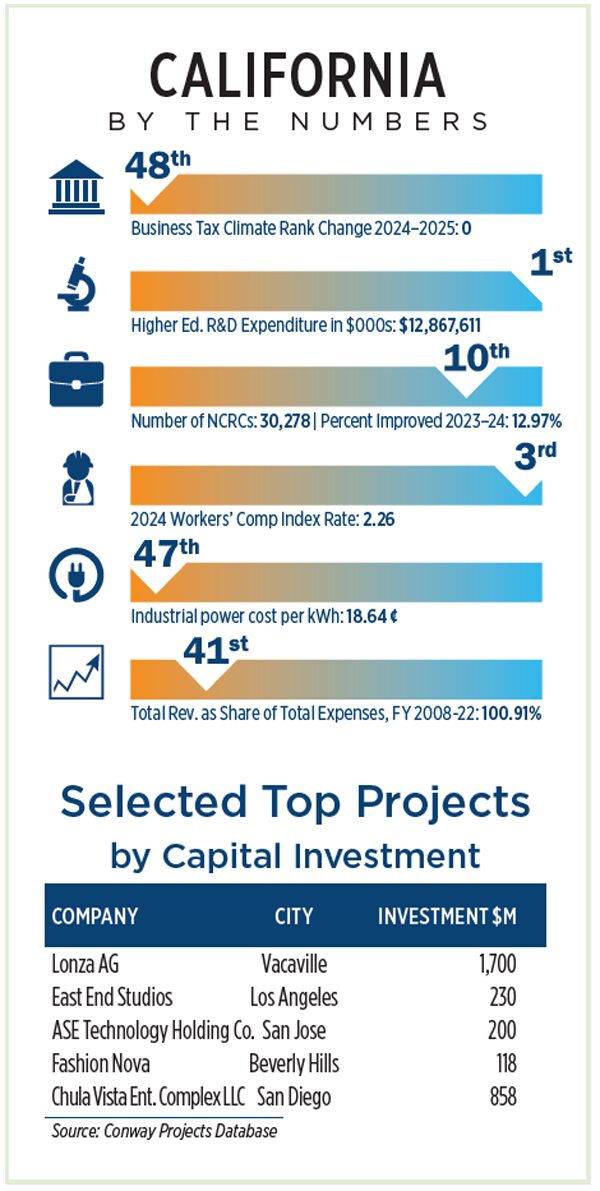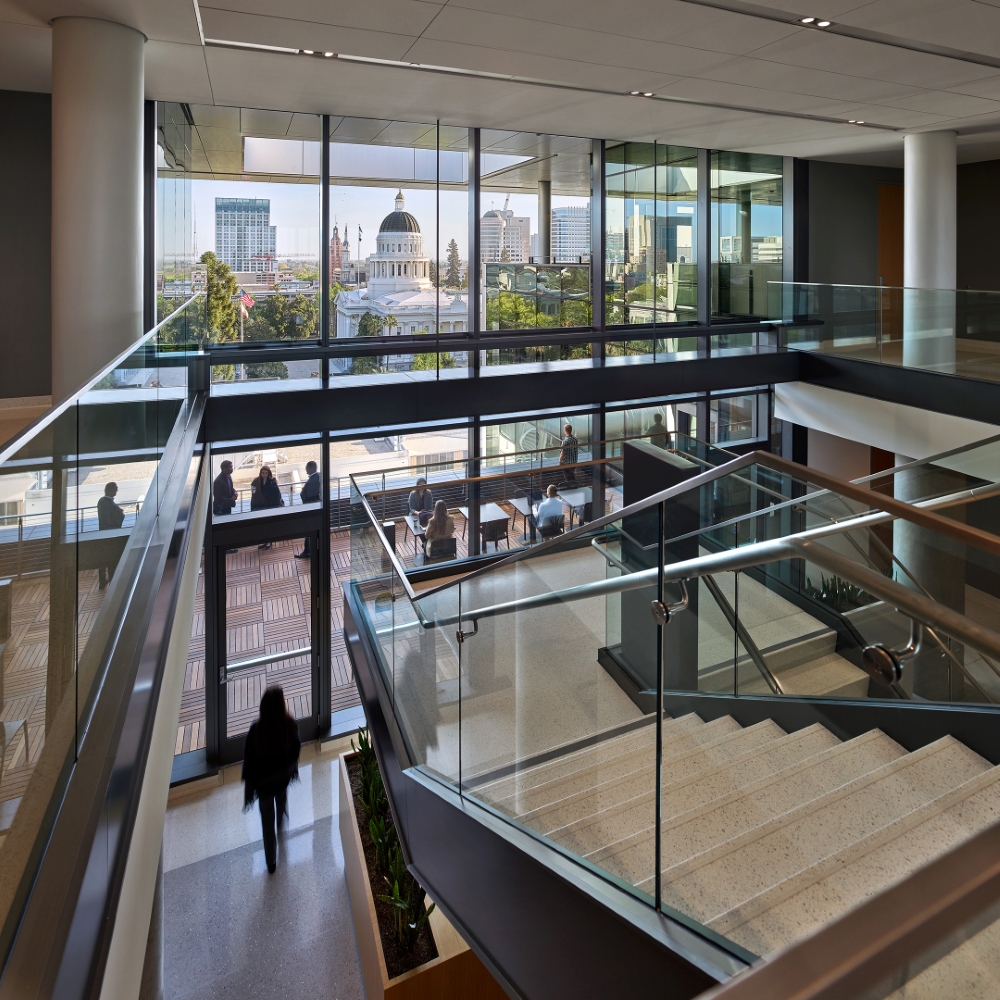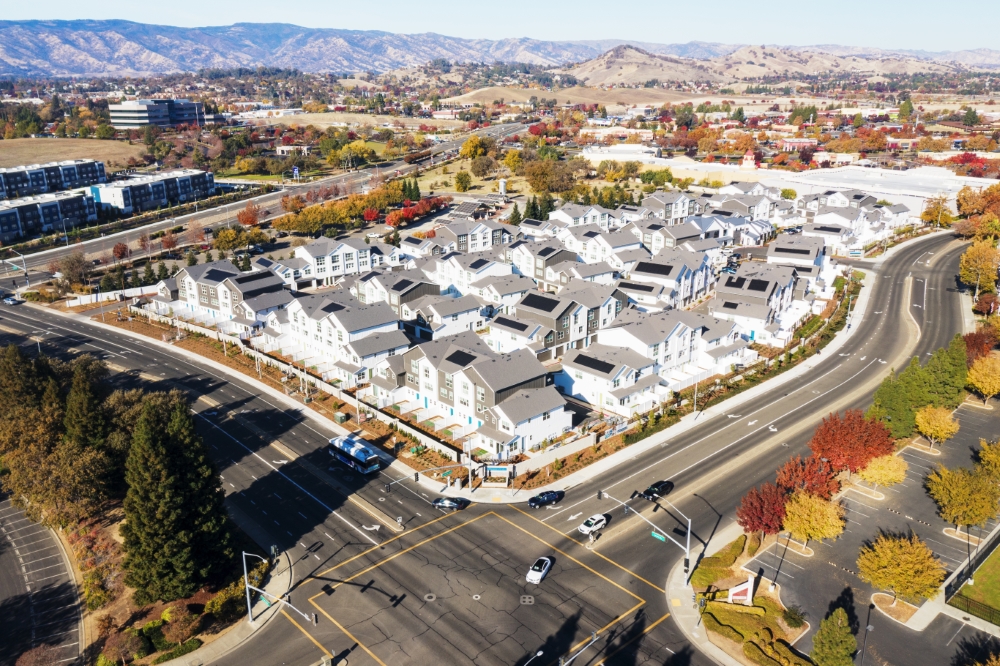How Vacaville became a biotech boomtown in the Bay Area.
An infusion of $1.75 billion in capital into the world’s largest biopharmaceutical manufacturing site is positioning a mid-sized city in Northern California to become a global leader in next-generation life-sciences technology.
Lonza AG of Switzerland is buying the old 427,000-sq.-ft. Genentech plant from Roche for $1.2 billion and planning to invest another $551.4 million into the site to create one of the biggest drug-making operations in the world.
That the plant is located in Vacaville, a Solano County city of 102,386 people midway between San Francisco and Sacramento, is no accident. For decades, Vacaville — named after Juan Manuel Vaca, one of the first two settlers in the area — has served as one of America’s top destinations for the brightest minds in biotech research and development.
Described by Lonza as a “large-scale mammalian facility,” the Vacaville plant currently employs 750 full-time workers, but could soon add 400 new hires as Lonza ramps up. Coming off a 2024 in which Lonza registered US$7.323 billion in total sales, the firm says it plowed 22% of that (about $1.6 billion) into capital investment “to enable future growth across technologies.”

The Basel-based company founded in 1897 said the acquisition of the California plant — completed on October 1, 2024 — made sense because “it creates a significant West Coast commercial manufacturing presence close to San Francisco’s pharma and biotech hub, complementing Lonza’s existing East Coast manufacturing site in Portsmouth, New Hampshire, as well as its international network across Europe and Asia Pacific.”
The firm notes that “with a total bioreactor capacity of around 330,000 liters, the Vacaville site is one of the largest biologics manufacturing facilities in the world. This acquisition significantly extends manufacturing capacity for late-stage clinical and commercial products, and new molecules on the path to commercialization within the Lonza network.”
Lonza CEO Wolfgang Wienand said, “The successful acquisition of the Vacaville site marks a major milestone for Lonza and for our commitment to deliver long-term value for our customers and shareholders. As the Vacaville site joins our Biologics division, we look forward to bringing new customer projects into the facility to meet sustained demand for commercial biologics manufacturing across our business. I am also delighted to welcome more than 750 highly skilled Vacaville colleagues into our global team, as they begin a new chapter with Lonza.”
Bargain Hunting in the Bay Area
For Vacaville, the Lonza commitment is an economic shot in the arm. “It is an exciting time for biotechnology and biomanufacturing in Vacaville,” said Mayor John Carli. “The acquisition of the Genentech manufacturing facility by Lonza marks a new chapter in our city’s history.”
Don Burrus, economic development director for Vacaville, says that “Vacaville has developed a large cluster of life science firms over the last 30 years.” He welcomes the new investment by Lonza, he says, because “the pay scale there is good and competitive. Over the past four years, we have been implementing an advanced manufacturing strategy, and we have been pretty successful.”
Besides Lonza, recent wins include Mettler-Toledo Rainin out of Oakland, which is establishing an instrumentation production operation and headquarters facility in Vacaville, says Burrus.
“Being centrally located in the Bay Area between Sacramento and San Francisco helps,” he says. “We have about 102,000 people in the city and about 500,000 people in the county. We are part of the nine-county Bay Area MSA, so finding workers is not a problem for companies that locate here.”
Burrus says investment into life sciences projects slowed during and after the pandemic but is now picking up. “The industry has been slow since 2022 due to the cost of money. With the capital markets being in the condition they’re in, almost all projects were put on hold,” he notes. “But we will probably see more activity this year. There is still a lot of interest in the development of production facilities in advanced manufacturing and biologics.”
A factor driving growth in the community is pricing. “Our costs are so much lower than being in the Central Bay Area,” says Burrus. “About 40% of the homes sold here are to people moving out of San Francisco to Solano County due to our lower cost of housing and lower cost of living. It is much more affordable all the way around here. We will see continued growth in Solano County and Contra Costa County. Those are the only two areas where there is still room to grow.”
California: A Manufacturing Mecca
In many ways, the Vacaville biotech sector is emblematic of the rest of the Golden State. A recent study by Biocom California shows that the economic impact of life sciences in California in 2023 was $414.2 billion. The report adds that the sector directly employs 466,888 workers and accounts for $64.3 billion in total labor income. Other leading indicators include:
- 16,576 life sciences establishments paying an average annual salary of $146,088
- $59.6 billion in annual private investment into biotech
- $34.1 billion in venture capital raised
- 7,343 patents filed
The manufacturing component of life sciences is one of the state’s largest. Biopharmaceutical firms in the state employ 329,198 direct and indirect workers, per Biocom. Medical device and equipment makers employ another 244,610 people in the state directly or indirectly.
The California Manufacturers and Technology Association (CMTA) notes that the total annual output of all manufacturing statewide is $300 billion, or roughly 10% of the total economic output of the state. Manufacturers employ 1.3 million Californians, says CMTA. On average, these factory workers take home $25,000 a year more than the average non-farm workers statewide.
Besides biotech, two of the fastest-growing sectors in California now are energy and semiconductor manufacturing. Last July, California won a world-leading Hydrogen Hub investment from the U.S. Department of Energy, supported by $1.2 billion in federal funds.
More recently, Fresno State University announced a new partnership to bring semiconductor manufacturing to California’s Central Valley. The partnership among FSU, SEMI, the City of Fresno, the City of Clovis, Fresno County EDC and Silicon Farms aims to bring the semiconductor manufacturing supply chain to Central Valley.

Recent LA area wildfires
Getty Images
WILDFIRE RECOVERY
How an insurance crisis complicates rebuilding
Rebuilding Southern California in the wake of the recent wildfire devastation across multiple Los Angeles–area communities will be complicated by an insurance crisis that is not easily fixed.
The Wharton School of the University of Pennsylvania estimates the insured losses from the California wildfires at up to $30 billion. For many business and residence owners, recovery will not come without significant costs.
If you are one of the lucky ones who did not have your fire coverage canceled by your insurer, you will likely face rising insurance premiums once you do elect to rebuild. Commercial real estate data company Trepp reports that the average property insurance expense increase from 2019 to 2023 in California was 81.64% — compared to the national average rate hike of 77.19%.
For industrial property owners, the bill is much steeper. Trepp reports that industrial property insurance rates in California climbed 120% from 2019 to 2023. The average U.S. industrial rate hike over that same period was just 50%. If you own office space, it will cost you 89.83% more to insure your space today than it did just five years ago.
On a recent webinar, three Trepp analysts noted that “the inability to effectively underwrite this in the future makes it impossible to effectively valuate these properties and buy them.”
The good news, they said, is that none of the impacted commercial mortgage-backed security loans in the Southern California areas affected by the fires were in delinquency prior to the losses.
In a late January report on LA area fire losses, the Wharton School noted that insurers in California are now seeking premium increases of 30% to 50%. With many insurance companies now viewing California as an extremely risky market, a number of them are declining to underwrite any new policies.
The situation is complicated by the fact that many of these same insurers are still paying out claims to businesses and homeowners affected by hurricanes Helene and Milton from last summer and fall. Those twin storms caused $114 billion in damages and losses in Florida, Georgia and the Carolinas.
To date, total economic damage from the 24 California wildfires is estimated somewhere between $250 billion and $275 billion. The fires consumed 45,000 acres, killed 37 people and destroyed more than 15,000 structures.
Policy Changes Recommended
Experts say that recovery will require a massive shift in policymaking in California and some creative thinking. For one, regulators will have to take a look at systemic changes to regulatory approval processes, including those for insurers. Florida, for example, recently gave the green light to 10 new property insurers to do business in the state, alleviating an untenable burden on Citizens, the state’s official carrier.
Making it easier and cheaper to build commercial and industrial structures will be a necessary step as well, say economic development leaders in California. The California Association for Local Economic Development recently opposed AB 98, a warehouse development restriction bill. Gov. Gavin Newsom signed it into law anyway.
CALED separately supported passage of SB 1140, which streamlines formation of Enhanced Increment Financing Districts to make the process easier and cheaper. This time, Newsom sided with CALED and signed the bill.
To help manufacturers, CALED backed AB 52, a bill to allow a credit against state personal or corporate income taxes to offset sales and use taxes dedicated to local agencies on manufacturing and research equipment. The bill passed, but Newsom vetoed it. CALED President and CEO Gurbax Sahota says that, despite these defeats, CALED will continue to advocate for streamlined regulations and help for local communities.
When Newsom recently unveiled his California Jobs First Economic Blueprint, which sets aside $120 million to support “ready-to-go” job-creating projects over three years, Sahota said the plan did not do enough to integrate local input and support.
“About $120 million is left in the pot for Jobs First money for development projects, but the problem is that most of the local economic development groups did not engage with the regional plans,” Sahota says. “Cities and counties did not participate in these plans. It will be disconnected from the local level. As a result, I have communities coming to me and asking, ‘How do we access this money?’ ”
Industrial property insurance rates in California increased 120% from 2019 to 2023.
Source: Trepp
Role of Incentives in Recovery
Sahota credits the governor, however, for keeping effective incentive programs, like California Competes Tax Credits and film industry credits, in place.
Ellen Harpel, founder of Smart Incentives, says that California has a good track record of establishing and maintaining incentive programs that produce a measurable and effective return on investment. “California’s Employment Training Panel [ETP] is a state agency that reimburses the costs for employer-customized job skills training,” she says. “They do great work. A 2020 study from Brookings found the ETP had positive and significant impacts on incentivized companies.”
A similar study conducted on California Competes and published in the Journal of Public Economics in January 2023 found that each CTCC-incentivized job in a census tract increases the number of employed people working in that tract by nearly three.
“These are good models for other states,” says Harpel. “They have built-in accountability measures. A lot of progress has been made. There is so much more transparency now. It is miles ahead of where it used to be.” — Ron Starner

San Diego’s new production studio aims to draw in new industry productions outside of Los Angeles while fostering a strong talent base in Chula Vista.
Getty Images
Hollywood Heads to San Diego
The new $85 million Chula Vista Entertainment Complex (CVEC) is positioned to cater to modern studio needs in California.
In December 2024, the Chula Vista City Council unanimously approved a letter of intent from CVEC to move forward with the construction of a planned 89,600-sq.-ft. film and television production facility in San Diego.
CVEC’s investment comes at the heels of Governor Gavin Newsom’s proposal in October 2024 to increase the state’s film and television tax credit from $330 million to $750 million per year. If passed, it would further cement the California as one of the top states in the nation for tax rebates for the industry.
“The Hollywood model is broken — and CVEC is here to change that,” said CVEC Founder and CEO Aaron David Roberts. “Chula Vista is a city that dreams big, and as big dreamers ourselves, we’re proud to join forces on this industry-shifting complex. Together, we’re not just revitalizing the local production economy; we’re putting San Diego County back on the map as a powerhouse for media and innovation.”
Pitch documents submitted by Roberts and his team detail the industry’s lack of regional hubs, while noting the region’s untapped potential to become a key player in Southern California’s media landscape. The location was selected due to its unique ability to cater to markets in both San Diego and Los Angeles.
Millenia Library will host 75,000 sq. ft. devoted to post-production needs. Phase two will take place across the street from the library to construct a virtual entertainment complex. The last phase will bring the potential of commercial, retail and hotel space on the remainder of the site within the next eight years.
Over the next decade, the estimated economic impact of this development is in the ballpark of $545 million. CVEC is anticipated to begin operations in three years, creating up to 200 new direct jobs at the complex.
“The Chula Vista Entertainment Complex will be the only campus of its kind in San Diego County,” said Chula Vista Mayor John McCann. “This project will set a new standard for our region and will bring critical new economic development to South County.” — Alexis Elmore

Camp Pendleton provides training facilities to the U.S. Marine Corps, Army and Navy and supports over 17,000 military families and personnel.
Photo courtesy of Camp Pendleton
Powering Camp Pendleton
In a move that will mark the largest grant awarded under California’s Long-Duration Energy Storage Program, the California Energy Commission (CEC) has approved $42 million in funding to Marine Corps Base Camp Pendleton in San Diego for an energy storage project that aims to provide up to 14 days of electricity to the statewide grid and backup power to the base in case of power outages. Camp Pendleton is the Marine Corps’ largest and the Department of Defense’s busiest West Coast expeditionary training facility, sitting on over 125,000 acres in San Diego County.
The program, which is funded under Governor Gavin Newsom’s multi-billion-dollar commitment to combat climate change, invests in demonstrations of non-lithium-ion technologies to build a portfolio of 8-hour-plus energy storage technologies. This will be the seventh project to receive grant funding, totaling $170 million to date.
“Long-duration and multi-day energy storage technologies will help California achieve its clean energy goals by enhancing how we store power generated by renewable resources,” said CEC Chair David Hochschild. “This landmark energy storage project continues a long collaboration between the Energy Commission and the military to bring emerging clean technologies to maturity and help reduce pollution, support grid reliability and advance climate solutions.”
International Electric Power will lead the project, which is slated to be installed at Camp Pendleton’s Haybarn Energy Reliability Center. It will use zinc hybrid cathode aqueous battery technology that will provide an initial 6 megawatts (MW) or 48 megawatt hours (MWh) with plans to increase capacity to 50 MW or 400 MWh of long-duration energy storage.
The project will not only support the state’s goal to move to 100% clean electricity but integrates the necessary infrastructure to support grid reliability and move away from fossil fuel-powered backup electricity generation. This installation will add to the over 13,000 MW of battery energy storage currently available in California.
“Since the beginning of my administration, California has been on the front lines of the global battery revolution. We’ve ramped up battery storage capacity by more than 1,600%, bringing us a quarter of the way to meeting our projected need,” said Governor Newsom. “Battery storage projects like this one at Camp Pendleton are vital to building a reliable and resilient electric grid in the face of climate extremes.”
The project is expected to become operational by mid-2027. — Alexis Elmore

One of the more than 11,000 LEED-certified projects in California is this California Department of General Services building near the state capitol in Sacramento.
Photo courtesy of DGS Newswire
Green Building LEEDer
The state that ranked No. 2 in Site Selection’s 2024 Sustainability Rankings is only burnishing its green credentials.
At the end of January 2025, the U.S. Green Building Council (USGBC), the developer of the global LEED green building program, released its annual list of the Top 10 States or Territories for LEED based on LEED-certified gross square footage per capita during the previous calendar year. California came in No. 6 behind per-capita leaders such as No. 1 District of Columbia and No. 2 Massachusetts. But nearly lost in the shuffle is the state’s 437 LEED-certified projects during the year, dwarfing the next closest competitors Texas (205) and New York (170). As of last summer, the state was No. 2 (behind Texas) for total LEED-certified projects at 11,155. It appears to be two-horse race: The next closest competitor — Arizona — had just under 4,400 projects. — Adam Bruns

